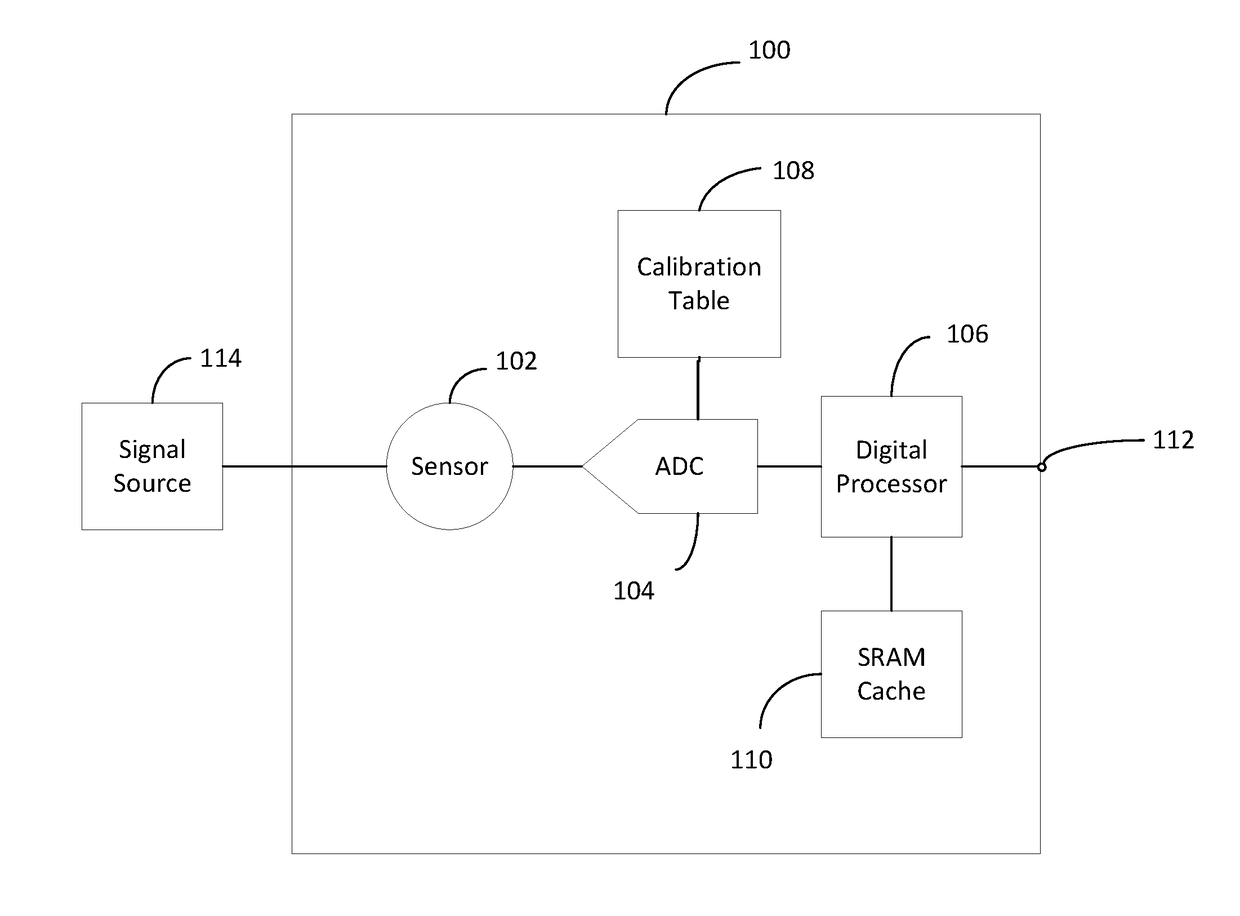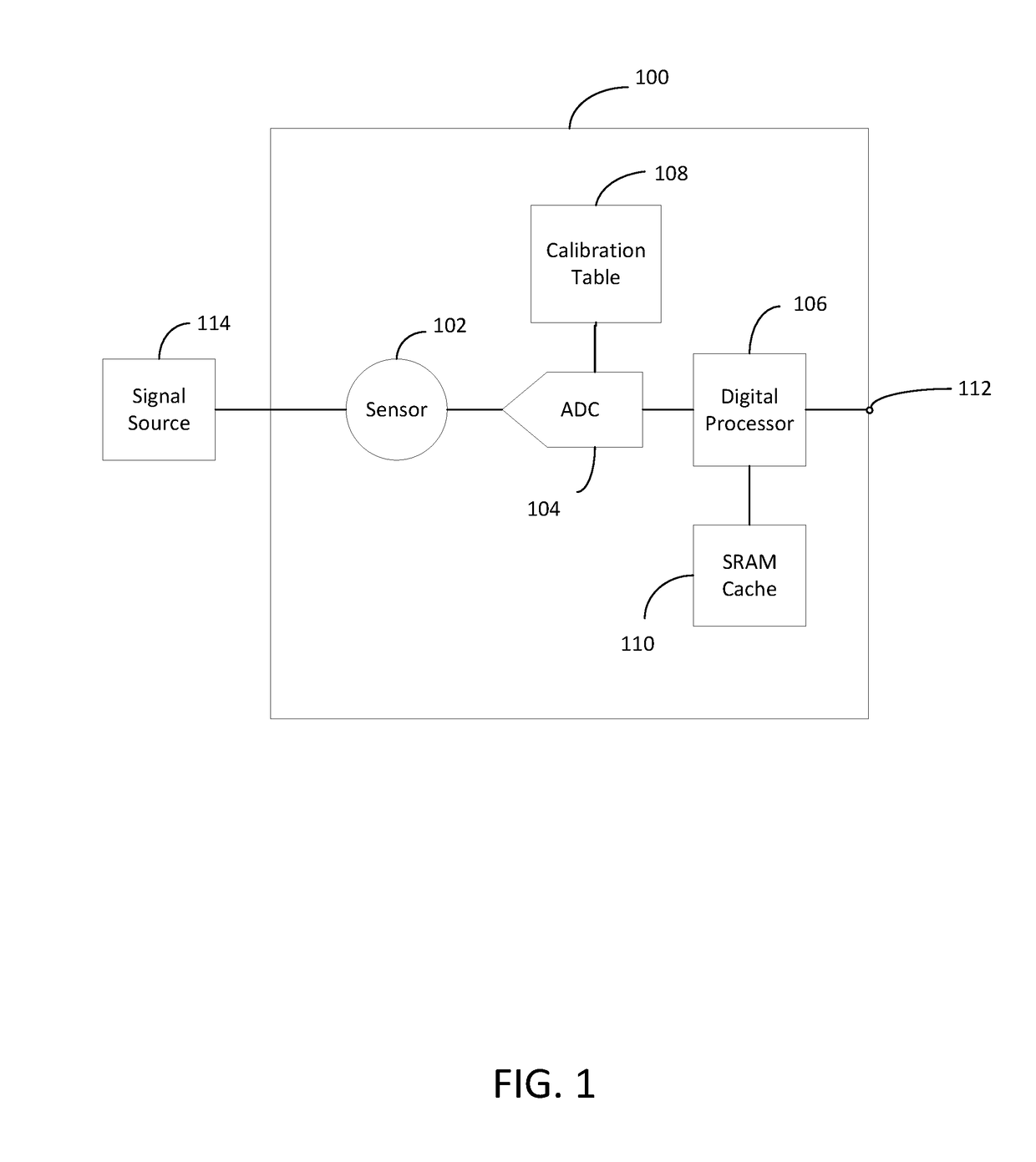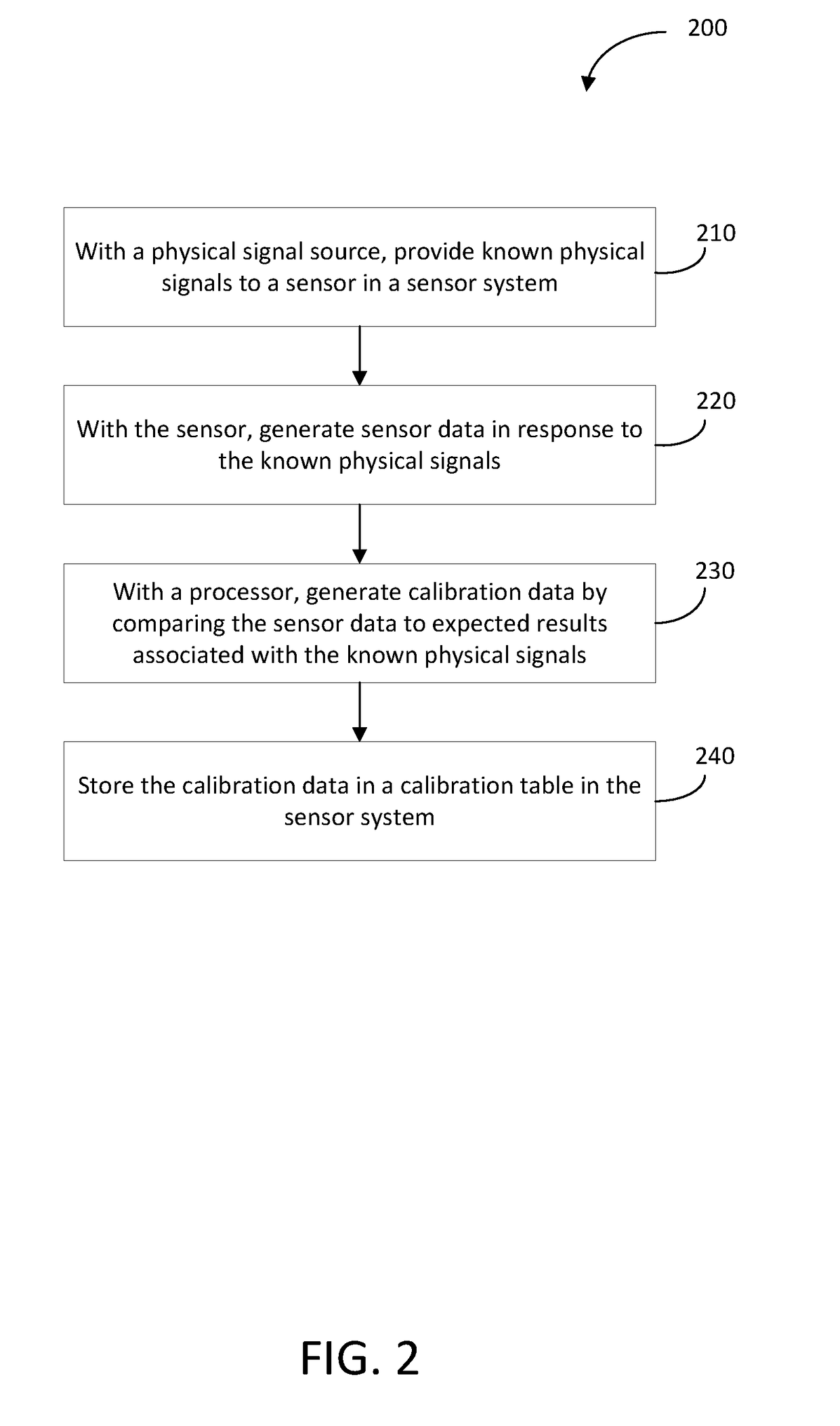Pufs from sensors and their calibration
a technology of sensors and sensors, applied in the field of cybersecurity, can solve problems such as the vulnerability of sensor based systems that are connected to the web
- Summary
- Abstract
- Description
- Claims
- Application Information
AI Technical Summary
Benefits of technology
Problems solved by technology
Method used
Image
Examples
example # 1
Example #1: Securing the Smart Grid
[0083]Uncalibrated current sensors (magnetometers) paired with calibrated sensors can be installed at every node of a grid. The hamming distance between the two output signals responding to a reference current Iref are the challenges and may be stored in the secure server managing the network. To authenticate a particular node, the reference current Iref is sent again to the node and the response to the current sensors is analyzed for CRP matching. This method can authenticate each sensor and conversely can be used at the node level to authenticate the network; in this last case the authentication is done by a secure processor that is part of the node.
example # 2
Example #2: User Authentication
[0084]Each user is given a token that includes a pair of 3D magnetic sensors, and a small wireless communication apparatus. For authentication the user may place the token on a transmitter of a magnetic field of known amplitude that is located at the point of entry of a secure facility. The sensor placed in the token will read the magnetic field and transmit back the response to the transmitter for the CRP analysis which is done by the server of the secure facility. The identification of the user is preferably done with a different method that is synergistic with this authentication.
example # 3
Example #3: Authentication of Smart Phones
[0085]Commercial smart phones incorporate multiple sensors such as accelerometers, gyroscopes, and magnetometers. The insertion of uncalibrated sensors as part of these embedded sensors can continuously generate responses for authentication that are tracking the signal produced by the calibrated sensors. It becomes then possible to authenticate each smart phone by their PUF sensor for the purpose of digital rights management, anti-theft, and software protection.
PUM
 Login to View More
Login to View More Abstract
Description
Claims
Application Information
 Login to View More
Login to View More - R&D
- Intellectual Property
- Life Sciences
- Materials
- Tech Scout
- Unparalleled Data Quality
- Higher Quality Content
- 60% Fewer Hallucinations
Browse by: Latest US Patents, China's latest patents, Technical Efficacy Thesaurus, Application Domain, Technology Topic, Popular Technical Reports.
© 2025 PatSnap. All rights reserved.Legal|Privacy policy|Modern Slavery Act Transparency Statement|Sitemap|About US| Contact US: help@patsnap.com



